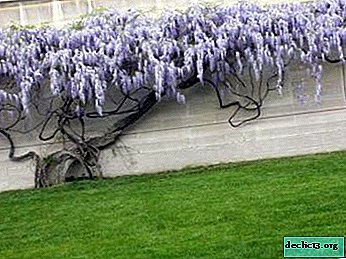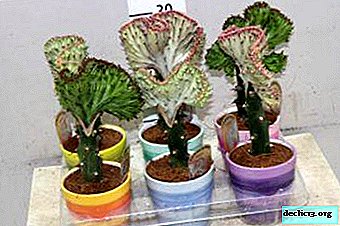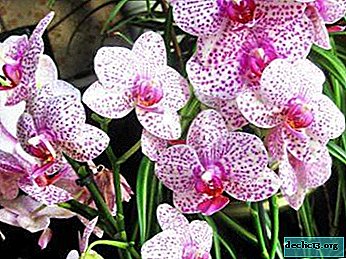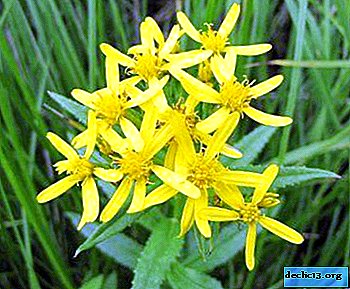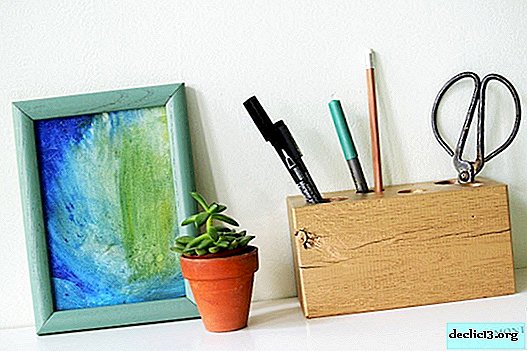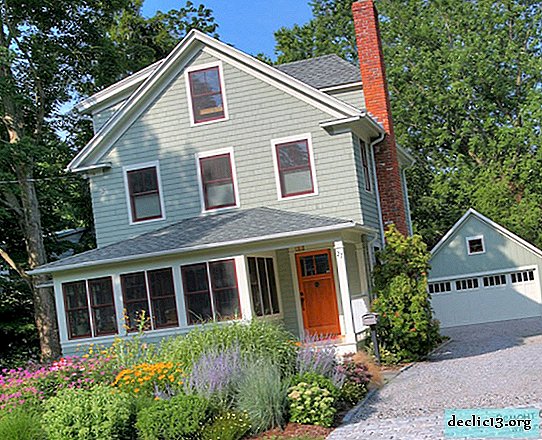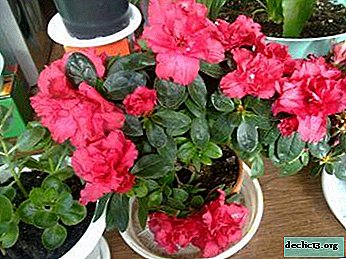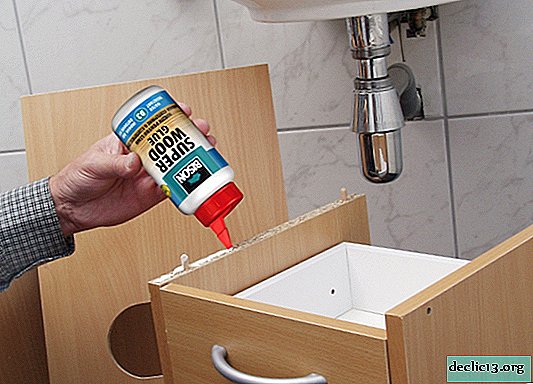What are the diseases of the leaves in gloxinia and how is the treatment carried out?

Gloxinia is a popular houseplant. In terms of growing it is not picky, but has its own characteristics of care.
If they are violated, then this is fraught with the development of diseases that most often affect the leaf plate. Why is this happening? Need to know more about your ward.
Next, we talk about the most common flower problems, precautions. Also, learn about the proper care of the plant.
What is this plant?
This is an exotic plant, whose homeland is Brazil and Peru. The plant is perennial, belongs to the Gesneriev family. It features velvety foliage and funnel-shaped flowers. They can take a variety of colors. Flowers are like bells. The color is very different:
- Blue
- White.
- Pink.
- red.
- Brown.
- Violet.
Structure and features
The leaves of the plant resemble an elongated heart in shape. Their size is small, therefore, the area of moisture evaporation is large. The surface is fleecy, there are distinct veins. The color of the leaf plate is dark green, they themselves are wide, but pointed at the tip. Together with bright colors, an original and interesting tandem is obtained.
Common diseases: description and photo
Next, you can see a photo of gloxinia leaf diseases:



Brown spots appear
Anthracnose
This is a fungal disease, which can be recognized by the presence of brown spotting on the leaves of gloxinia. Over time, they begin to attack the shoots and trunk of the plant, which leads to their decay and destruction. If you do not start treatment for anthracnose, then it will ruin the whole flower. The disease occurs mainly in plants that have mechanical damage or no melting care.
Note! The development of the fungus is promoted by high air humidity and a high pH level in the soil, as well as a lack of potassium and phosphorus.For the prevention of anthracnose, you need to spray with such drugs:
- Oxychom;
- Cuproxatom;
- Chloroxy copper.
The fungus is transported using equipment, rainfall and pests. So in rainy weather, it is not recommended to put the flower on the street. After using the inventory, immediately disinfect it in order to destroy the pathogenic microflora and prevent infection. If the infection is strong, then the flower is subject to complete destruction. To prevent the development of fungus on other plants, they will have to be treated with fungicides 3-4 times with an interval of 1.5 weeks.
Ascochitosis
This is a fungal disease that can be recognized by the presence of brown or red spots with a brown border. They all focus on the leaves of the plants. The main reason for the development of the disease is increased humidity in the room.
- If the first symptoms are detected, immediately remove all affected leaves immediately.
- Treat the flower with a Bordeaux mixture, blue vitriol or with such fungicides: Vectra, Abigapik.
- After 7 days, repeat the treatment.
Why do they fade and curl?
 These symptoms indicate a disease like fusarium. The main reason why it develops is the high humidity and lack of water, nutrients in the soil, as a result of which, gloxinia leaves folded. Fusariosis is a fungal disease that penetrates the plant through an infected substrate. The leaves begin to fade, twist and turn brown.
These symptoms indicate a disease like fusarium. The main reason why it develops is the high humidity and lack of water, nutrients in the soil, as a result of which, gloxinia leaves folded. Fusariosis is a fungal disease that penetrates the plant through an infected substrate. The leaves begin to fade, twist and turn brown.
What to do if leaves are curled?
- To save the plant, remove it from the pot.
- Carefully clear from the ground.
- Treat with fungicides such as Topaz and Foodnazole.
- Transplant a flower into fresh soil.
- Remove the bush and inspect it. If there are damaged parts of the tuber and aerial elements, then remove them.
- Treat the remaining healthy parts with Topaz or Fundazole.
- Transplant the cured plant into a new healthy soil.
- Finding a flower in a room where the air temperature is 20-25 degrees and the humidity is 98%.
- Moisturizing the leaves of a plant, the duration of which is more than 48 hours.
- Poor illumination of the plant.
- Benomil.
- Mankozeb.
- Chlortalonil.
- Maneb.
- too dense soil;
- stagnation of water in a pot;
- dense arrangement of plants;
- the use of non-sterilized land composition;
- watering with rainwater and frequent spraying;
- humidity above 80%;
- finding a flower in a room with an air temperature of 17-22 degrees above zero.
 the formation of brown spots on the leaves;
the formation of brown spots on the leaves;- moldy plaque of white color, which affects the inside of the leaf;
- the formation of strips of dark brown color on the leaves and stems;
- frequent wilting plant;
- the formation of annular depressions on the flower trunk.
- Cuprozan.
- Polycarbocide
- Tsineb.
- Polymarcin.
- Kaptan.
- Watering will be done on time when the plant requires it. Then there will be no overdries and bays.
- Do not install the flower where direct sunlight falls on it.
- Before planting gloxinia tubers in the ground, they should be processed.
- Monitor the humidity in the room.
- Good lighting. It should be bright and at the same time scattered. Arrange the flower on windows facing east or west. The daylight should last 12-14 hours.
- Light and nutritious soil, fertilization. Peat based soil is best used. Make top dressing 2-3 times a month. Use potassium monophosphate, Fertica Lux.
- Timely hydration. Between watering the top layer of the earth should dry out a bit. Watering is done through the pan or along the edge of the pot. Use only warm and settled water. After moisturizing, excess water should go through the holes in the pot. Read about how to properly water and feed gloxinia at home.
- The temperature regime should be 18-25 degrees. If the temperature is low, then growth will stop, and if it is high, the flowers open poorly, the plant loses leaf turgor.
- Capacities with flowers should not be located close to each other. Make sure that the plants do not touch each other with leaves. With a lack of space, the flower may stretch out. Read about the gloxinia pot you need here.
Turn yellow
Chlorosis
This disease occurs with low acidity of the earth, which is the result of watering the flower with hard water. It is easy to recognize the ailment, since yellow spots of various shapes appear on the leaves.
Recommendation. To save the plant, it must be transplanted and irrigated only with soft water at room temperature. For transplantation, an acidic and light substrate is used, which can pass air to the root system.Rust mushroom
If bubbles of different colors form on the inside of the leaf plate and yellow spots appear on the outer surface, these are clear symptoms of a rust fungus. The reason for the development is poor care, or rather, maintenance in a humid, musty and cold room. To combat the disease remove all damaged parts of the plant and provide proper care for the plant. For prevention, spray with colloidal sulfur.
Blacken
Why do the leaves turn black? When the stem and leaves began to blacken at gloxinia, these are symptoms of gray rot. The development can be affected by increased soil moisture. To combat the disease, use the following recommendations:
Brown spots
Septoria
 This is another fungal disease that is transmitted by raindrops and air currents. The following conditions can affect the development of Septoria:
This is another fungal disease that is transmitted by raindrops and air currents. The following conditions can affect the development of Septoria:
The main symptoms of Septoria are dry spots of gray-brown color on leaves that resemble rust. Then they fall, and the stems dry out.
For treatment, use various drugs based on copper and fungicides:
Perform processing 2 times with an interval of 7-10 days.
Late blight
This disease is one of the most dangerous. It can spread through soil, planting equipment, and even rainwater.
Important! In soil, the causative agent can remain viable for up to 8 years.Plant infection occurs 2-3 months before the development of the main symptoms. The following factors affect:
The following symptoms will help to recognize diseases:
The treatment of late blight is a complex and lengthy process. The fact is that its pathogen does not respond to chemicals. The best method of struggle remains prevention. It consists in the use for spraying such drugs:
Processing is carried out in periods that may affect the development of the disease. The interval between spraying is 7 days.
Are dry
If the bottom leaves of the flower dry, then factors such as insufficient humidity or overflow can affect this. To eliminate the problem, treat with Fungicide or Phytosporin.
Note! If the leaves began to dry in the fall, when the flower is preparing for rest, then this is the norm.You can learn more about the various diseases and pests of gloxinia, as well as measures to combat them, from this article.
Preventative measures
To prevent leaf disease from affecting the flower, it is important to carry out prophylaxis in time:
Prerequisites for Healthy Growth
For proper development and healthy growth of the plant, the following conditions must be observed:
Read more about caring for gloxinia here, and here we talked about the features of growing a flower.
All of the listed gloxinia diseases are important to detect and start the fight in a timely manner. If you miss this time, then you can destroy not only this flower, but also neighboring ones. And it is better to provide conditions suitable for the growth and development of the plant, and to carry out preventive measures in a timely manner.

 the formation of brown spots on the leaves;
the formation of brown spots on the leaves;